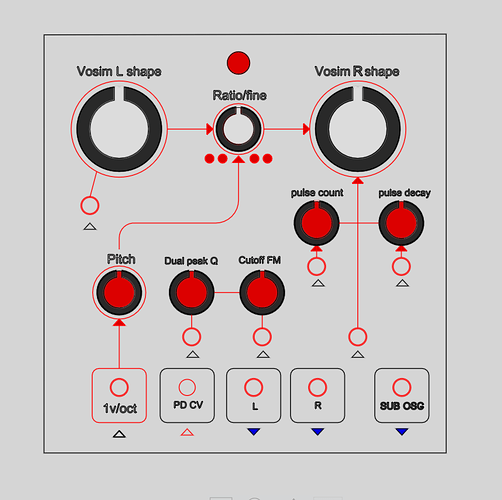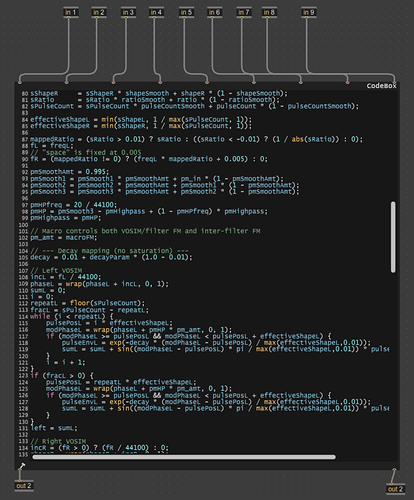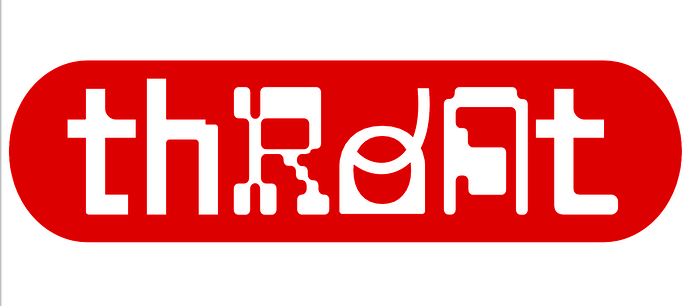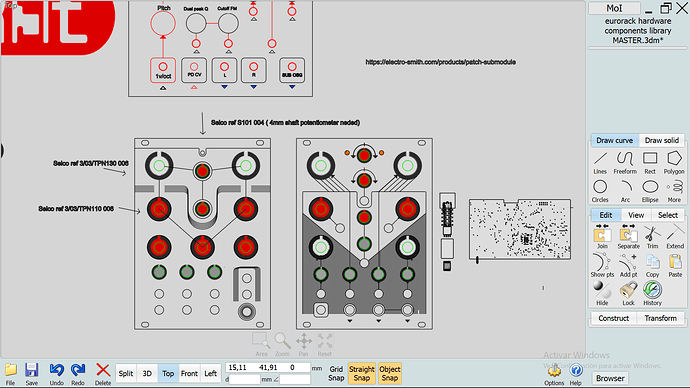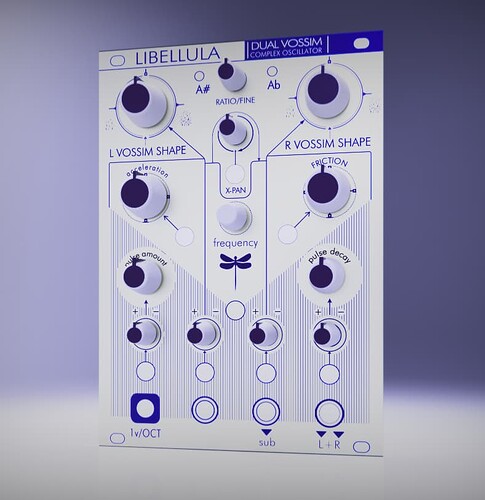Hi!
After many months of coding, testing, and iterating, I’ve finally finished the software for my first 3U module. Everything is now in the realm of software and preliminary faceplate designs–I wanted the faceplate to visually represent the DSP mechanisms behind the algorithm.
LIBELLULA (Latin for “dragonfly”)
This algorithm grew out of my obsession with using dual VOSIM oscillators to cross-modulate a dual-peak band-pass SVF (state-variable filter). By making the two peaks independently controllable, I could dial in throaty, grainy, formant-like characters—much like complex DSP systems in “big oscillator” modules from companies like Noise Engineering or Vhikk X (even tho this it’s a uni-algorithm at the moment, because you can get so many timbres)
During development, I discovered the most interesting sounds simulated insect-like buzzing and flight accelrations… That’s due to pulse cross-modulation with an integrated stereo band-pass oscillator, where you can sweep the resonant peaks across the stereo field…
Suddenly I was getting granular-style PWM, unique sync textures, growly synthetic FM tones… from almost analog, band-limited sideband layers to swarmy “super-VOSIM” effects.
I’LL UPLOAD RAW SOUNDS FROM THE OSC DURING THIS WEEK, SO YOU CAN LISTEN THE AMOUNT OF CRAZY, OR DREAMY , OR BRUTAL sounds that this little beast spits.
I’m also really pleased with how the preliminary faceplate represents the algorithm—almost no manual should be needed (unless you want the technical deep-dive).
As you can see, the panel sketches are just a layout. I’m coding in C++ within Max’s Gen framework because sample-by-sample processing is essential for this kind of cross-modulation.
Specs: (obviously it will run inside a DaisySeed)
Stereo I/O, 96 kHz / 24-bit (AC-coupled)
ARM Cortex-M7 MCU at 480 MHz
64 MB SDRAM for up to 10-minute audio buffers
8 MB external flash (for saving knob states and morphing between buffer snapshots via CV)
To Do:
Design a carrier board with CV input conditioning
Add visual feedback for ratio and tuning (e.g., LEDs that turn red when in “C”, with fine-tune in cents for a supersaw-style detune)
Refine the faceplate artwork to add polish and extra value
I’d love your feedback…—black or silver panels? Attenuverters or fixed-scale knobs? Anyone want to collaborate? any ideas?
The code will be open-source to encourage community contributions—adding new algorithms, expanding features, and building a platform for dual-digital oscillators.
I’m based in Barcelona, where a lot of eurorack companies and facilities live, so I’m in a good place for start manufacturing and learn and networking… (anyone from BCN ? say hello!)
Gracias!
Look at the old logo for the module…XD
